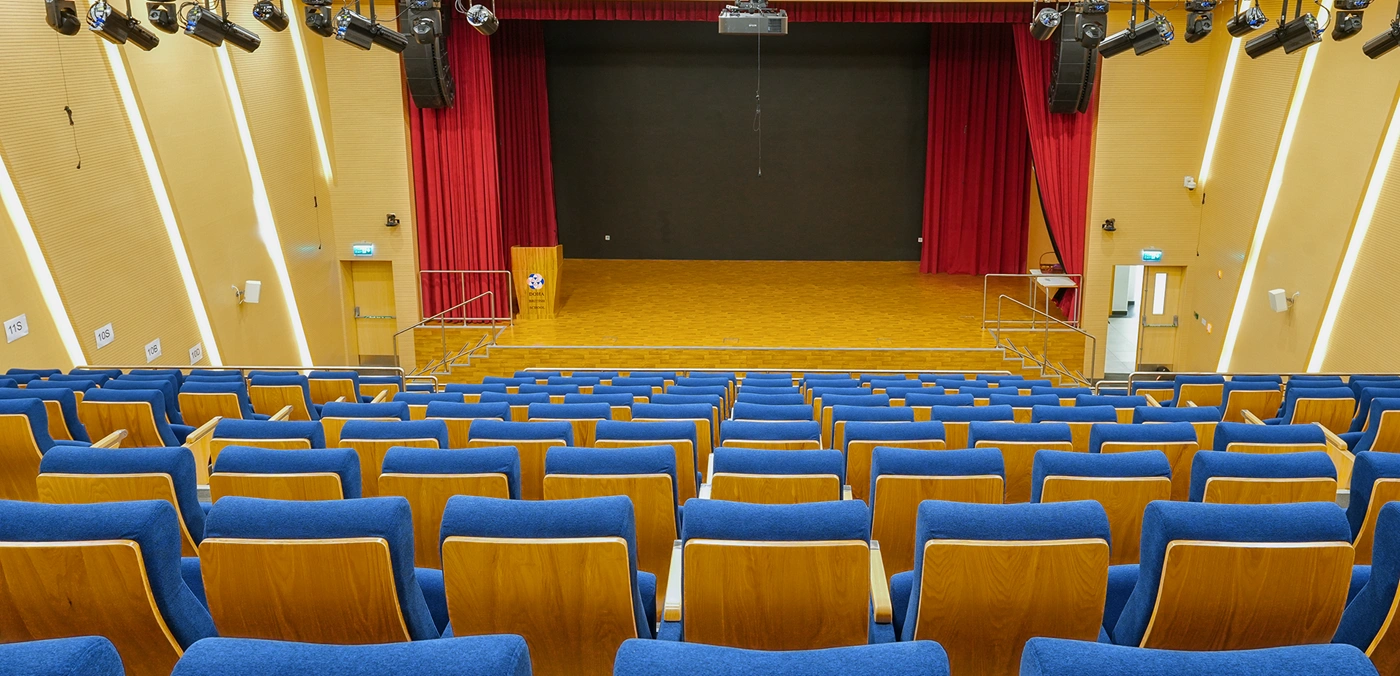Introduction
The design of a lecture hall plays a crucial role in acoustics, visibility, engagement, and overall learning effectiveness. The shape of the room determines how well students can hear and see the instructor, influencing knowledge retention and participation.
In this blog, we’ll explore the best lecture hall shapes and how architectural design impacts the learning experience.
1. Importance of Lecture Hall Shape in Learning
A well-designed lecture hall ensures that sound reaches all students evenly, visibility is maximized, and seating is arranged for comfort and interaction.
Key Benefits of an Optimized Lecture Hall Shape:
- Improved acoustics for clear audio delivery
- Enhanced sightlines for better instructor visibility
- Comfortable seating arrangements for prolonged focus
2. Traditional Rectangular Lecture Halls: Pros and Cons
Rectangular halls are common in older educational buildings but come with both advantages and drawbacks.
Pros:
- Simple to construct and furnish
- Familiar and easy to navigate
- Allows for tiered seating arrangements
Cons:
- Uneven sound distribution
- Poor sightlines for students at the back corners
- Higher risk of auditory distortion
3. Fan-Shaped Lecture Halls: A Popular Modern Approach
A fan-shaped lecture hall is wider at the back and narrows toward the front, optimizing both acoustics and visibility.
Why the Fan Shape Works:
- Improves sightlines so all students have a direct view of the instructor
- Enhances acoustics by reducing sound reflection issues
- Encourages interaction by minimizing distance between students and the speaker
4. Semi-Circular and Horseshoe-Shaped Lecture Halls
The semi-circular and horseshoe designs are commonly used for interactive learning environments.
Advantages:
- Equal sound distribution across the space
- Promotes engagement by allowing students to see each other
- Encourages participation in discussions and Q&A sessions
5. Theater-Style vs. Flat-Floor Lecture Halls
Theater-style halls use tiered seating, while flat-floor lecture spaces are more flexible for multiple uses.
Theater-Style Lecture Halls:
✅ Great for large audiences ✅ Maximizes visibility ✅ Ideal for multimedia presentations
Flat-Floor Lecture Halls:
✅ More flexible for rearrangements ✅ Encourages group discussions ✅ Better for interactive learning sessions
6. Acoustic Considerations for Optimal Lecture Hall Design
Sound clarity is critical in any lecture hall. Poor acoustics lead to miscommunication and decreased student engagement.
Best Acoustic Practices:
- Angled walls to minimize sound echo
- Sound-absorbing panels to reduce noise distortion
- Carpeted floors and soft materials for improved clarity
7. Sightline Optimization: Ensuring Every Seat is the Best Seat
Students must have an unobstructed view of the lecturer and presentation materials.
Key Sightline Enhancements:
- Tiered seating to eliminate visual obstructions
- Curved or angled seating arrangements for better alignment
- Strategic screen and whiteboard placement
8. Case Study: A University That Revamped Its Lecture Hall Design
A top university redesigned its lecture halls by shifting from rectangular layouts to fan-shaped seating with tiered rows. The result? A 30% improvement in student engagement and fewer complaints about sound and visibility issues.
9. How D&B Designs Optimal Lecture Halls
D&B specializes in designing lecture halls with scientific precision and innovative solutions to maximize student engagement.
Our Approach:
- Customized layouts based on class size and purpose
- State-of-the-art acoustic engineering
- Ergonomic seating and flexible configurations
Conclusion: Choosing the Best Shape for Effective Learning
The optimal lecture hall shape depends on the size of the audience, acoustic needs, and teaching style. Whether fan-shaped, semi-circular, or tiered, designing for visibility, comfort, and sound clarity is key to creating a successful learning environment.
For expert lecture hall design solutions, D&B provides tailored, cutting-edge layouts that enhance both instruction and student experience.

